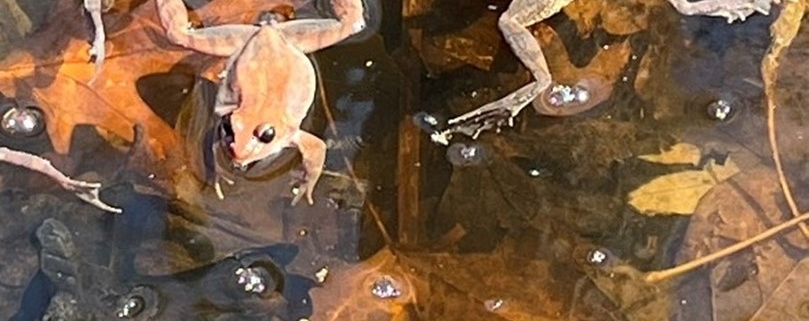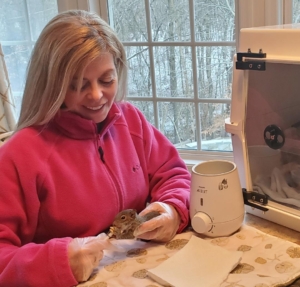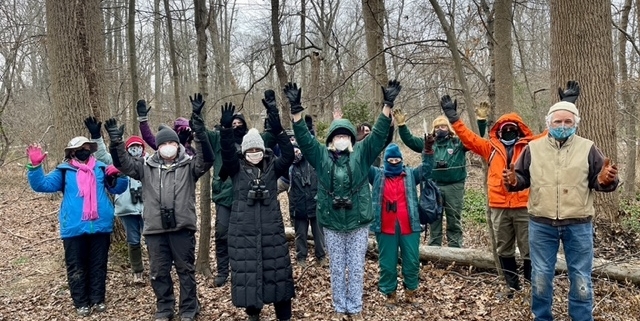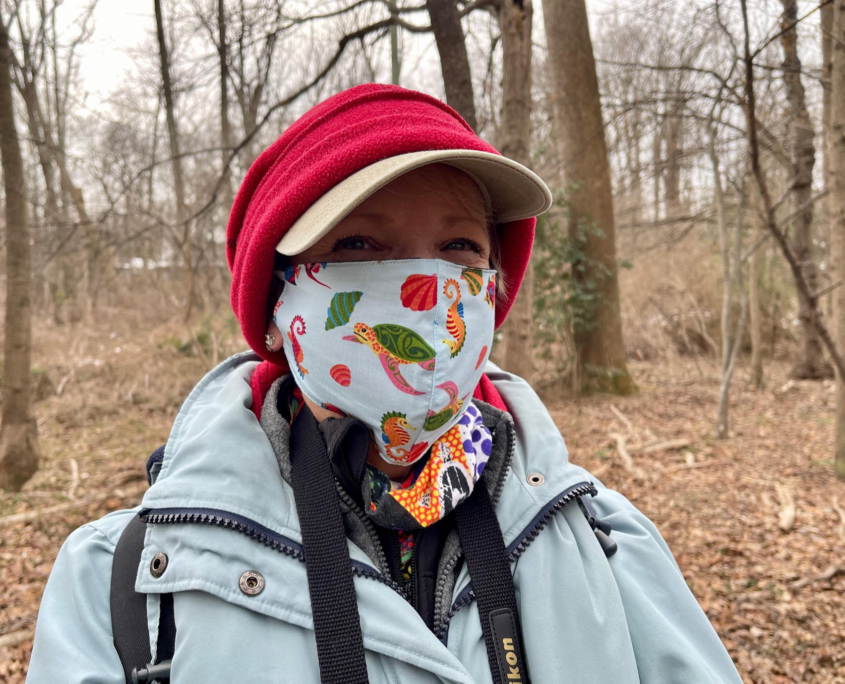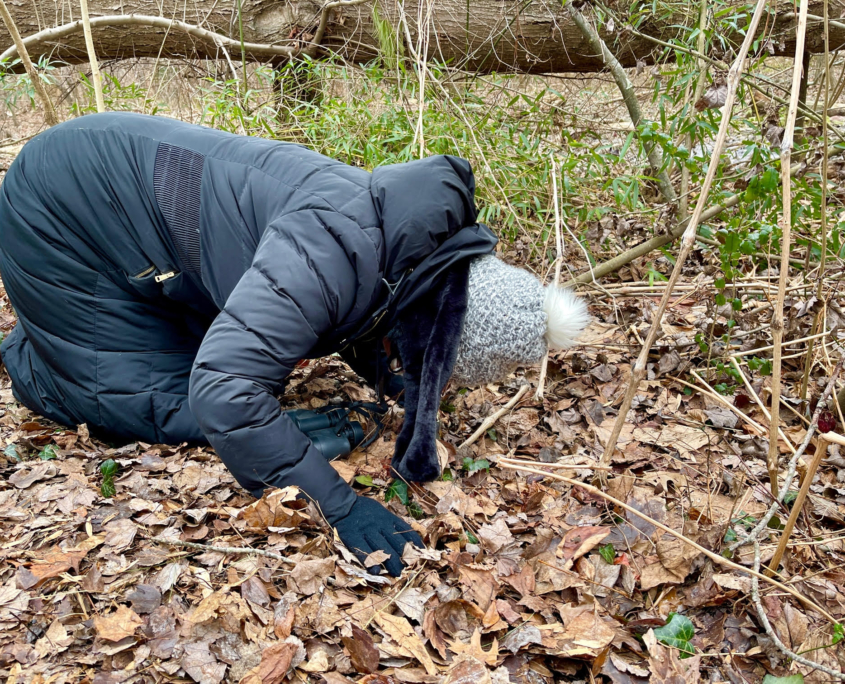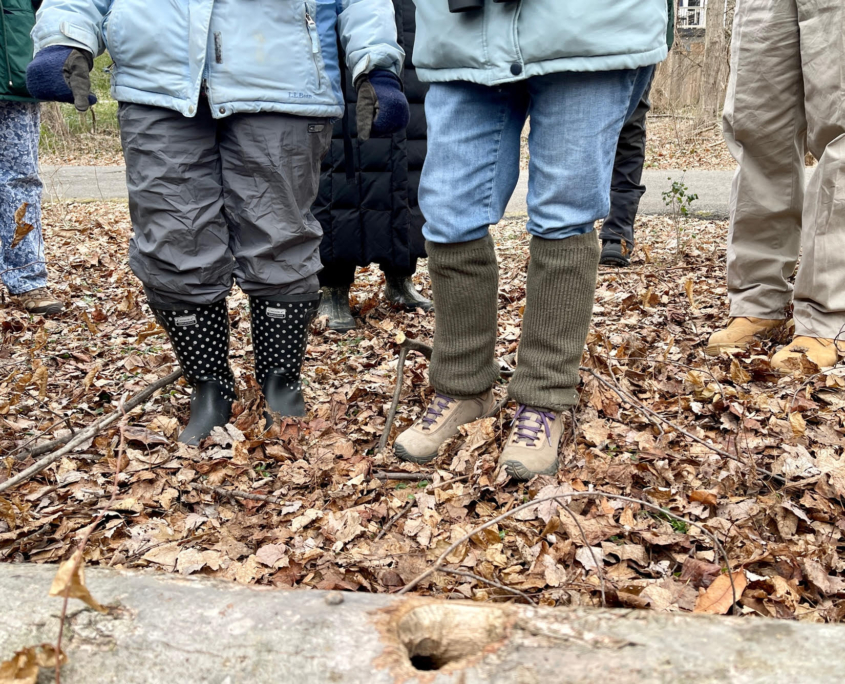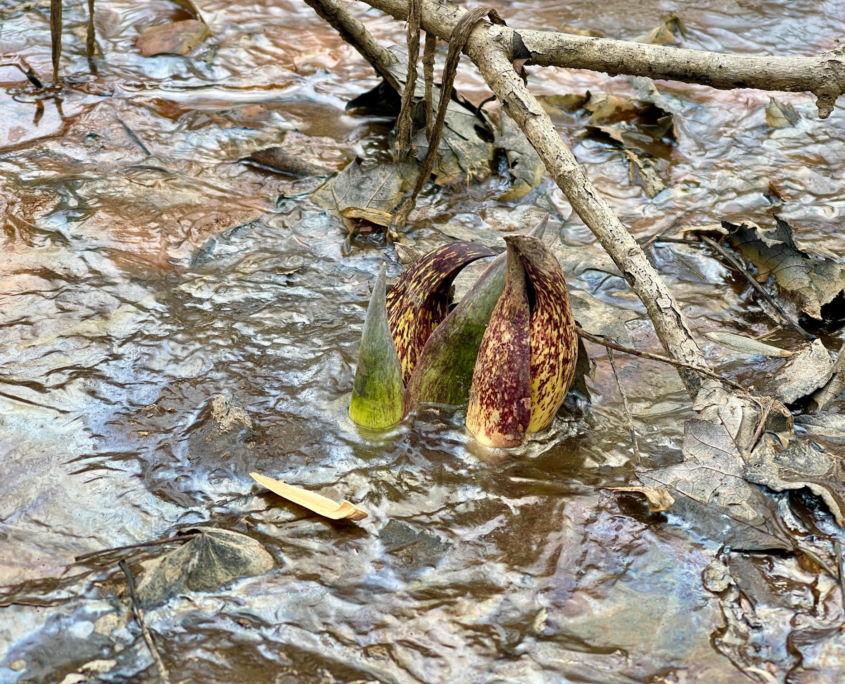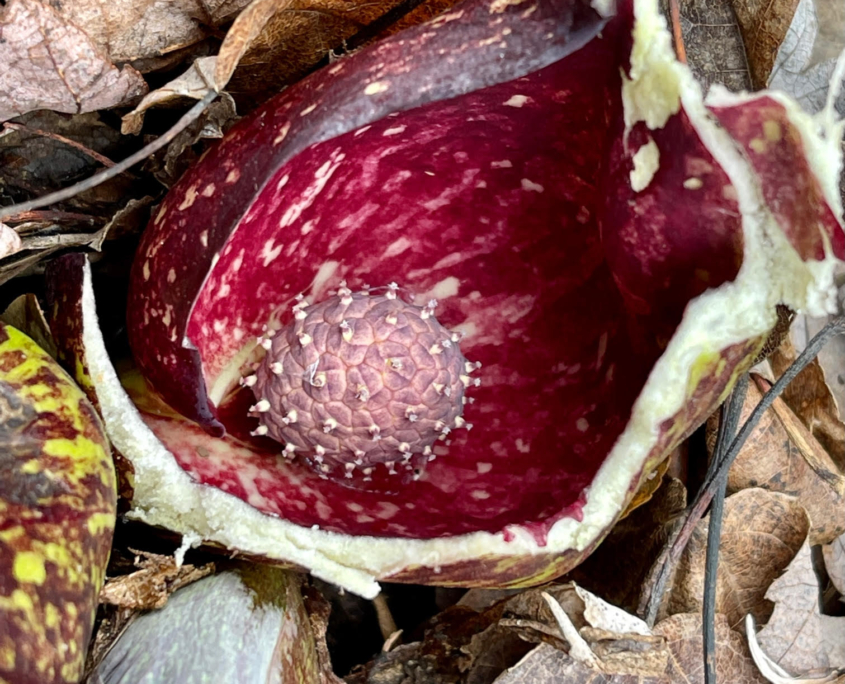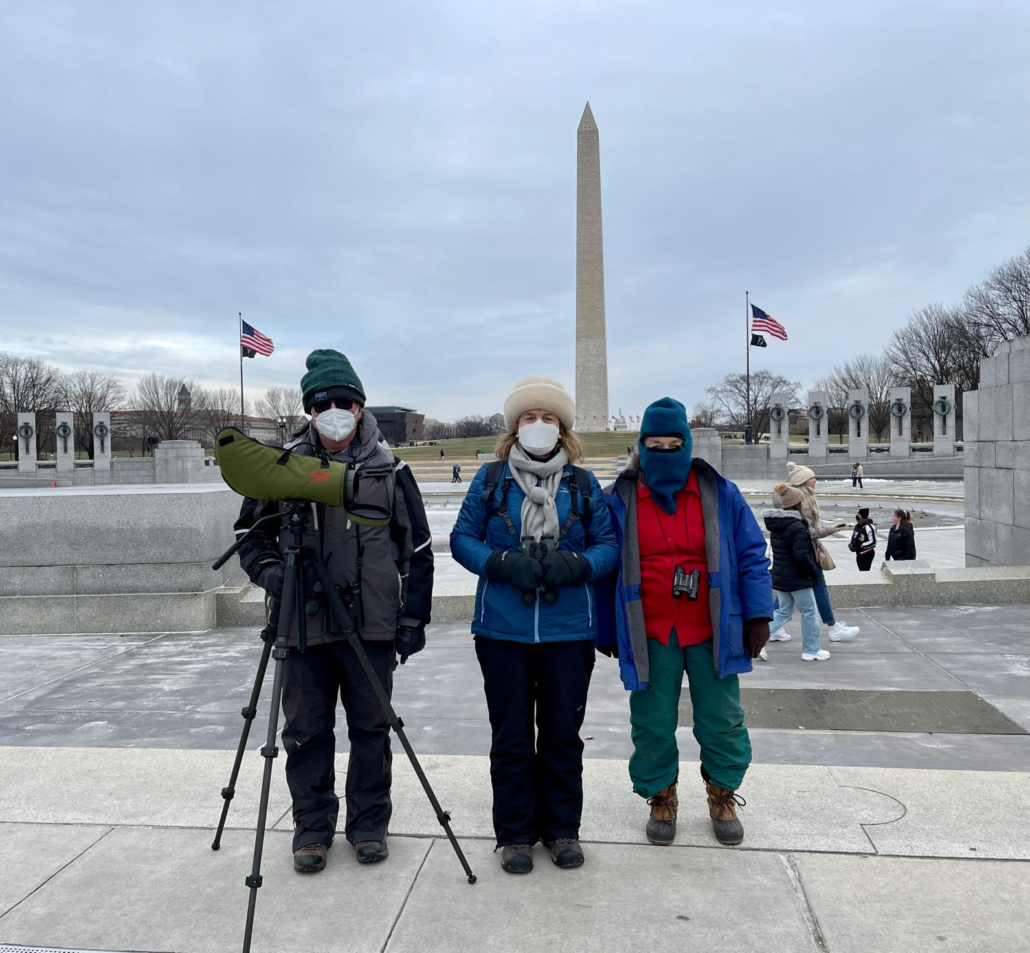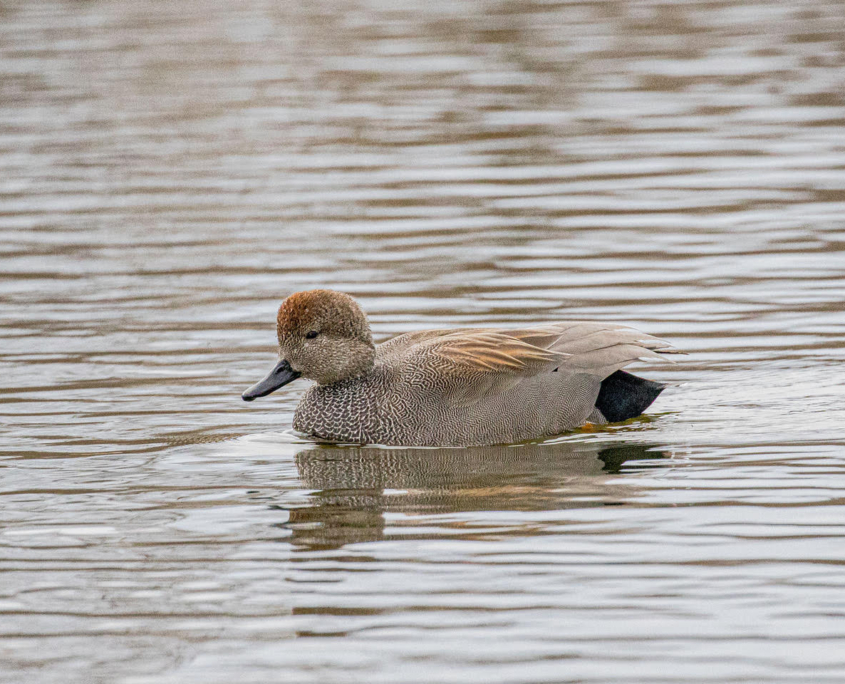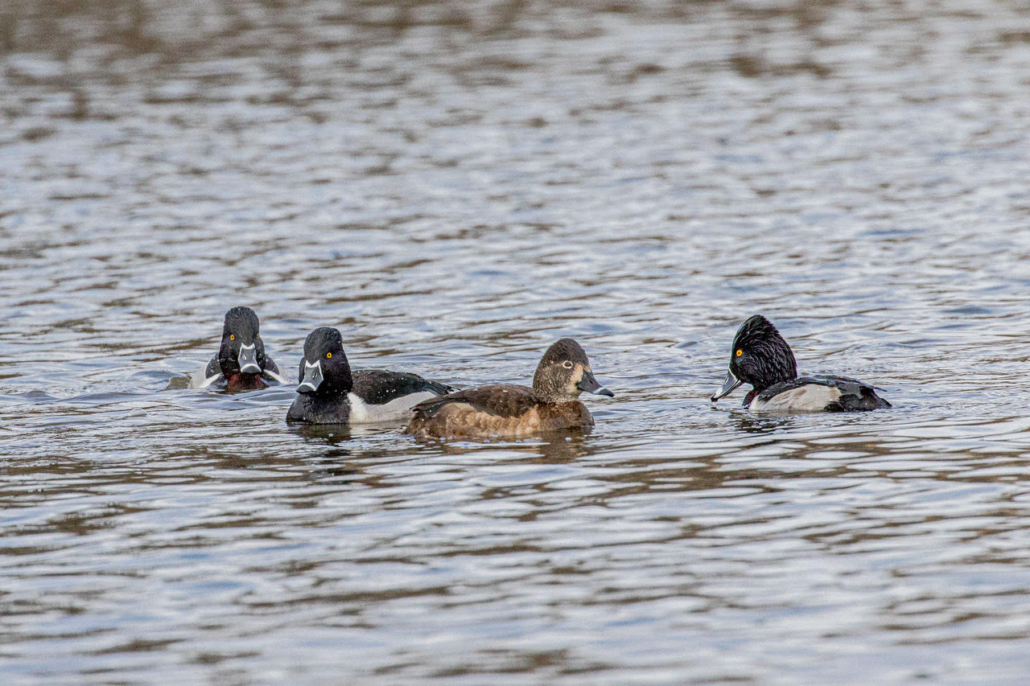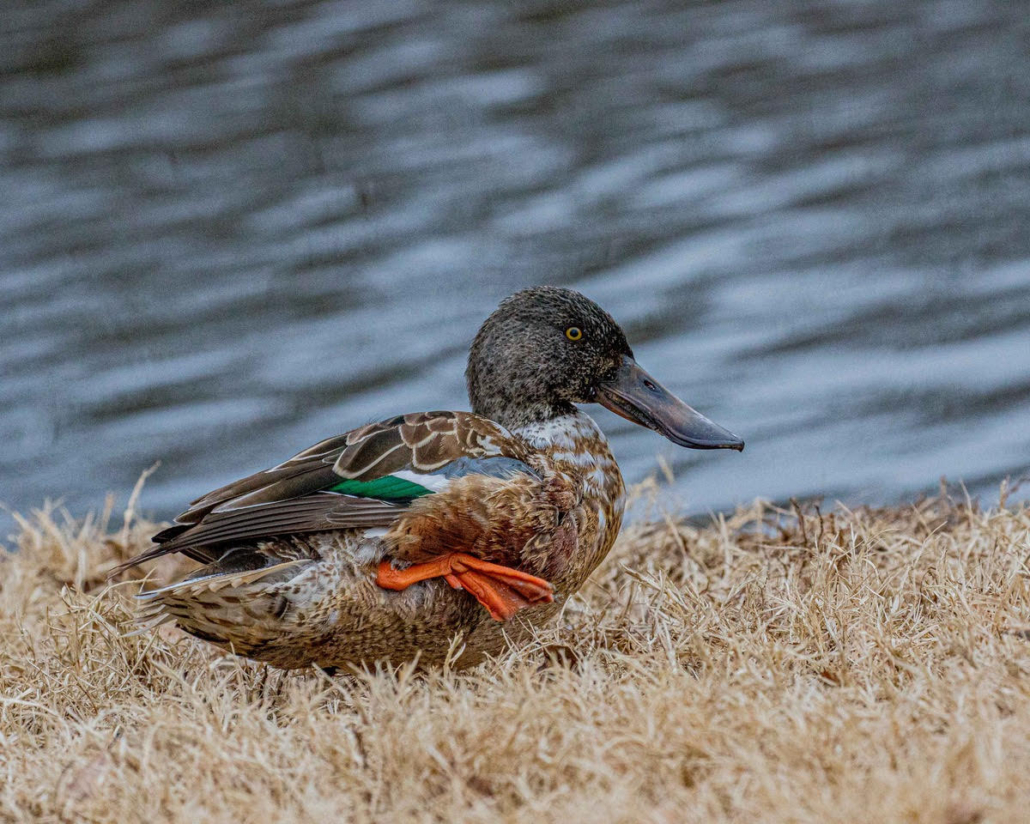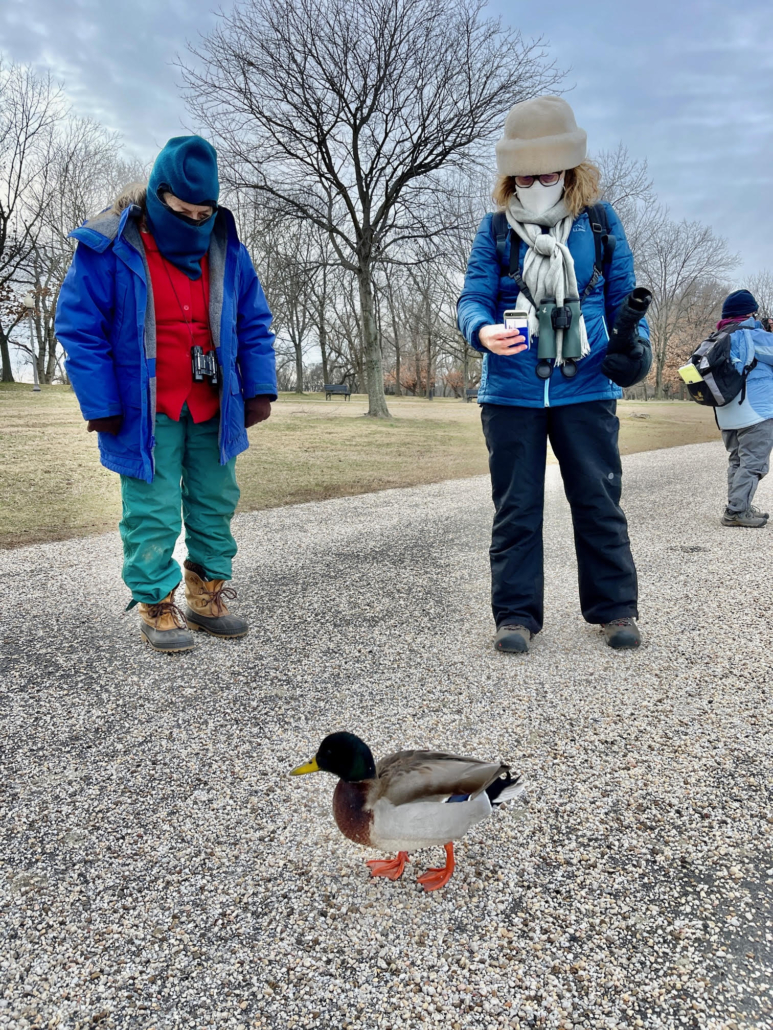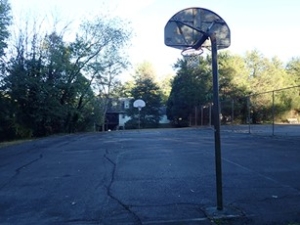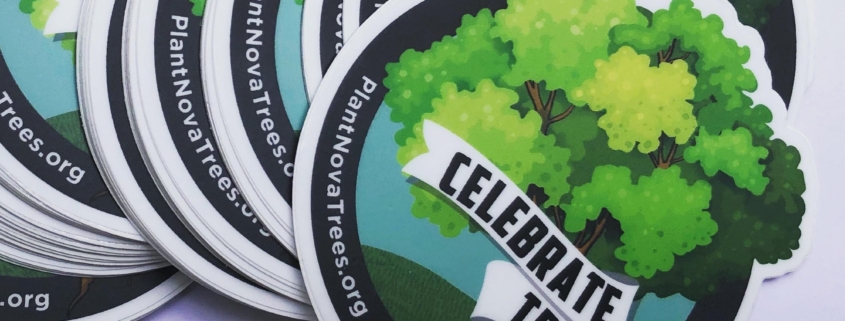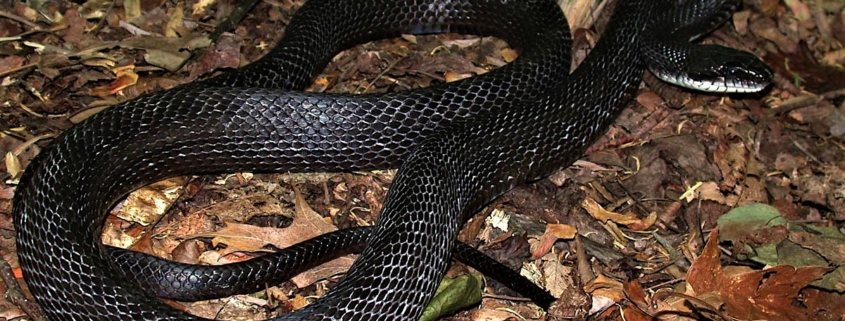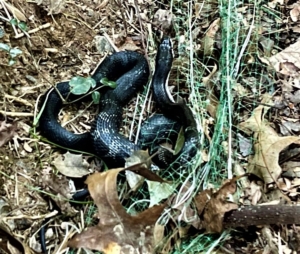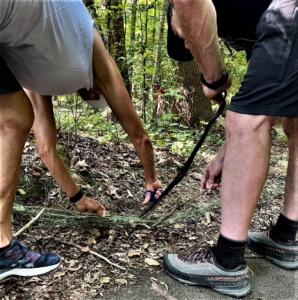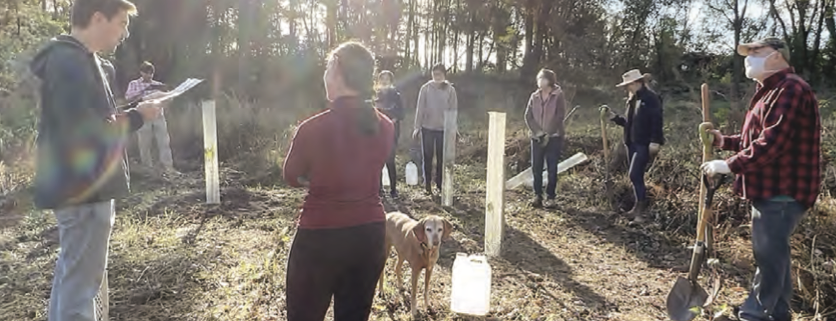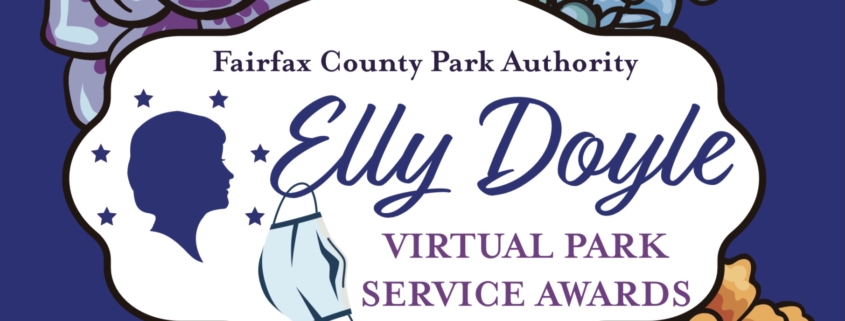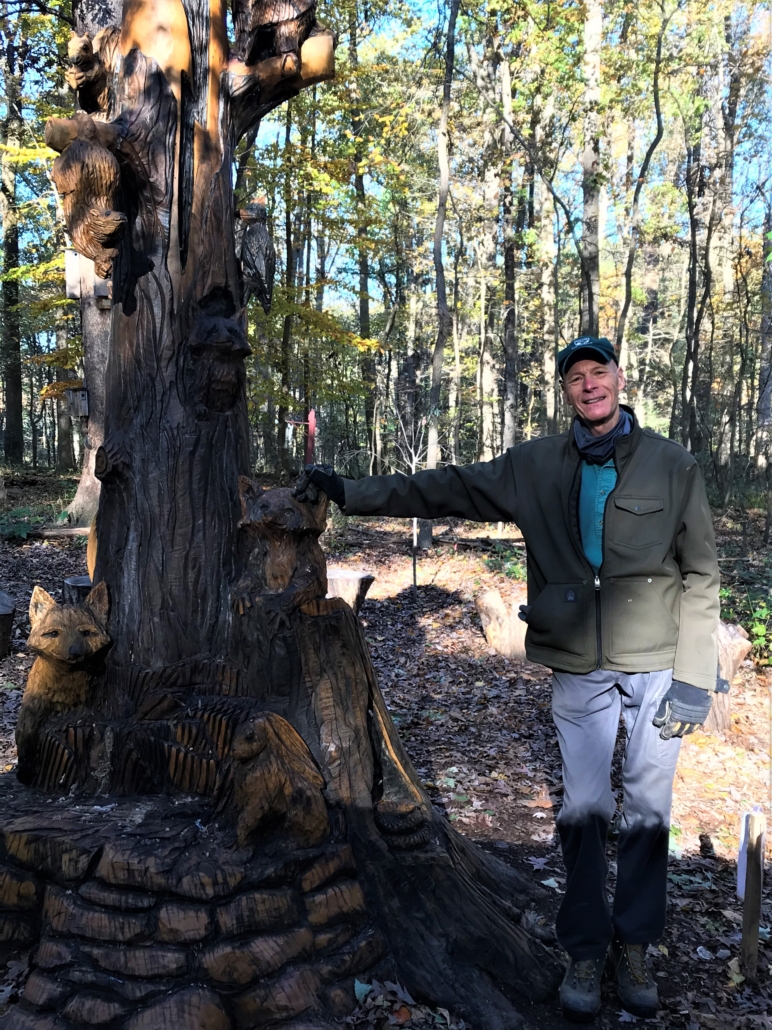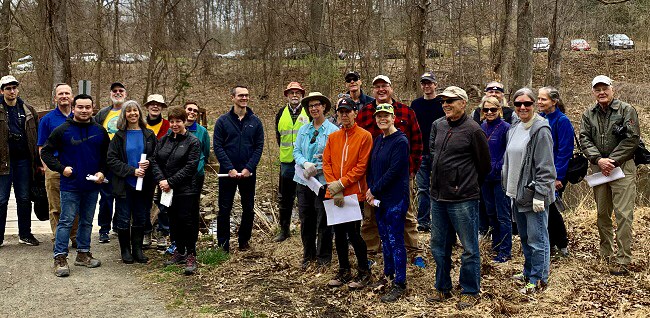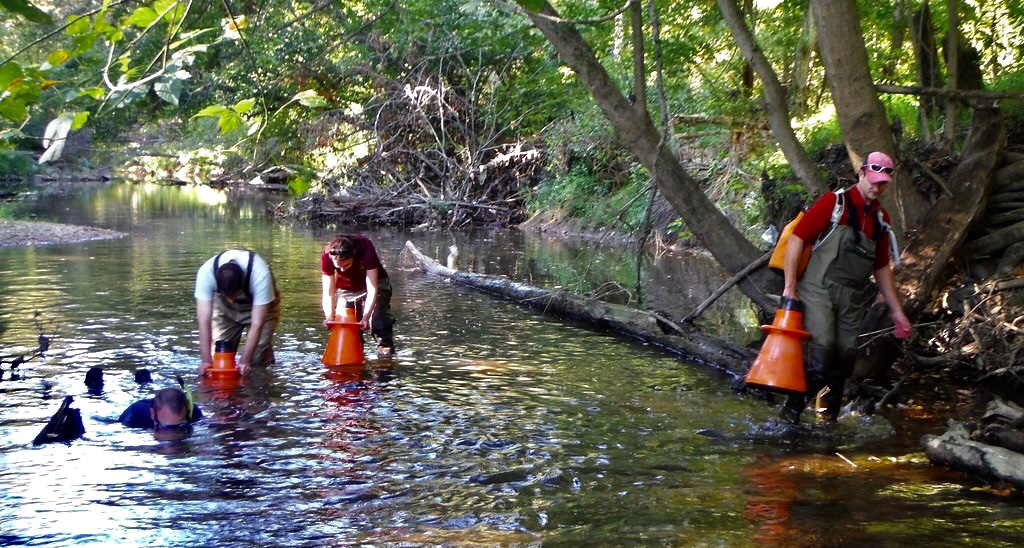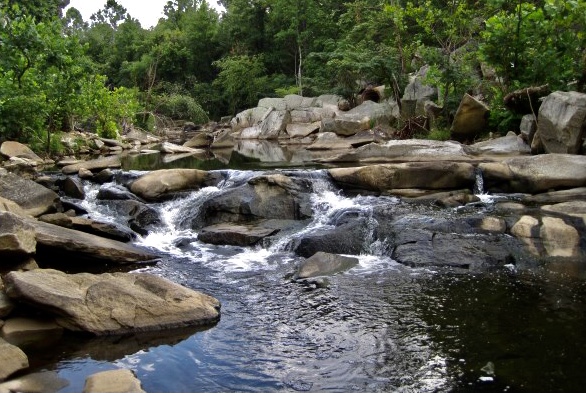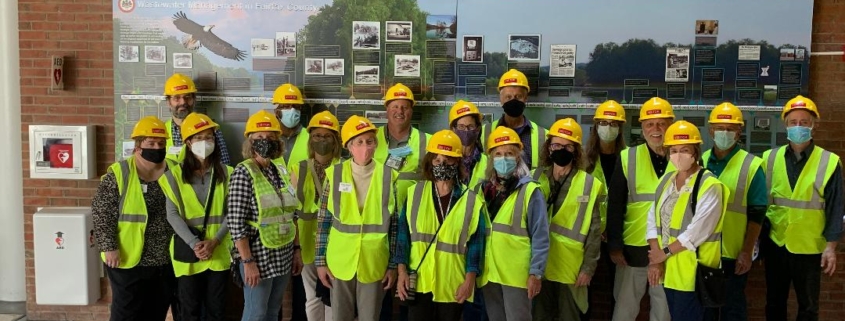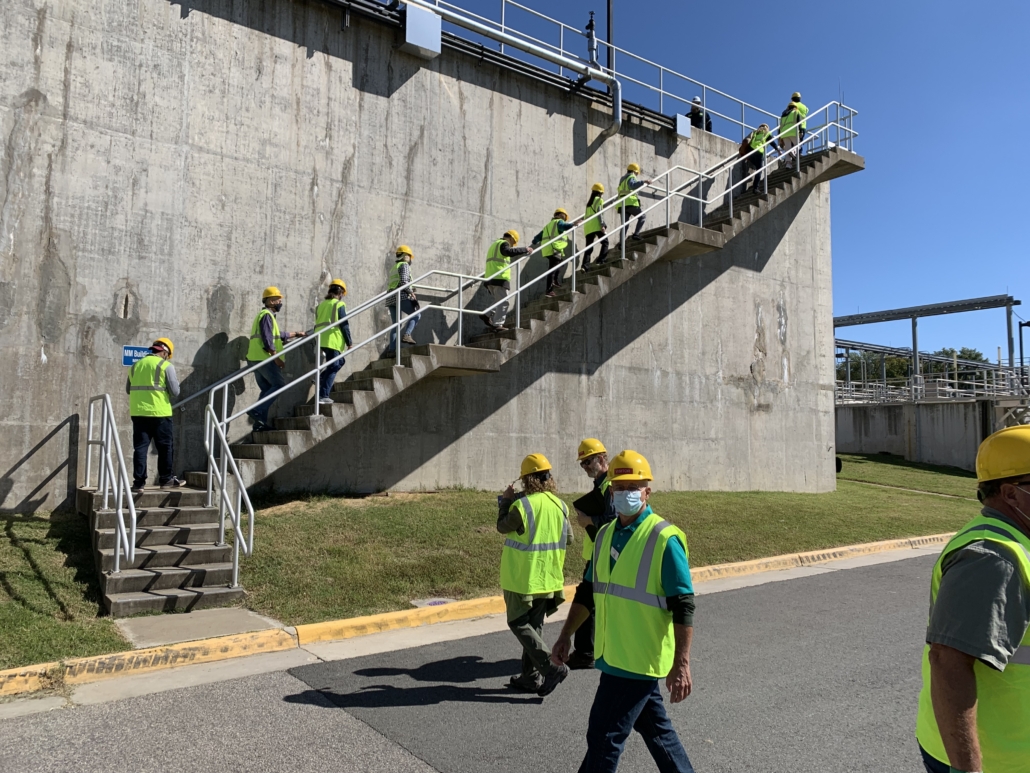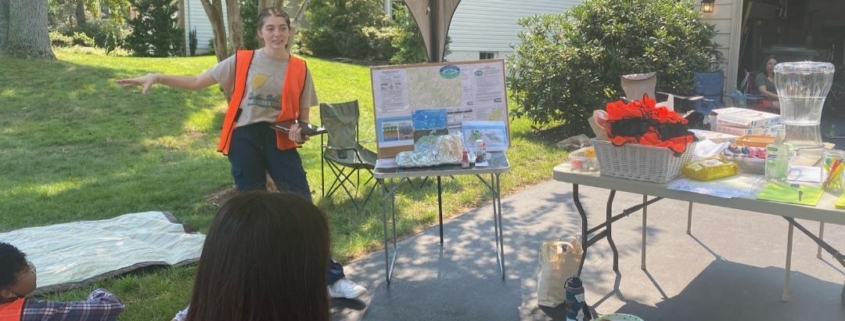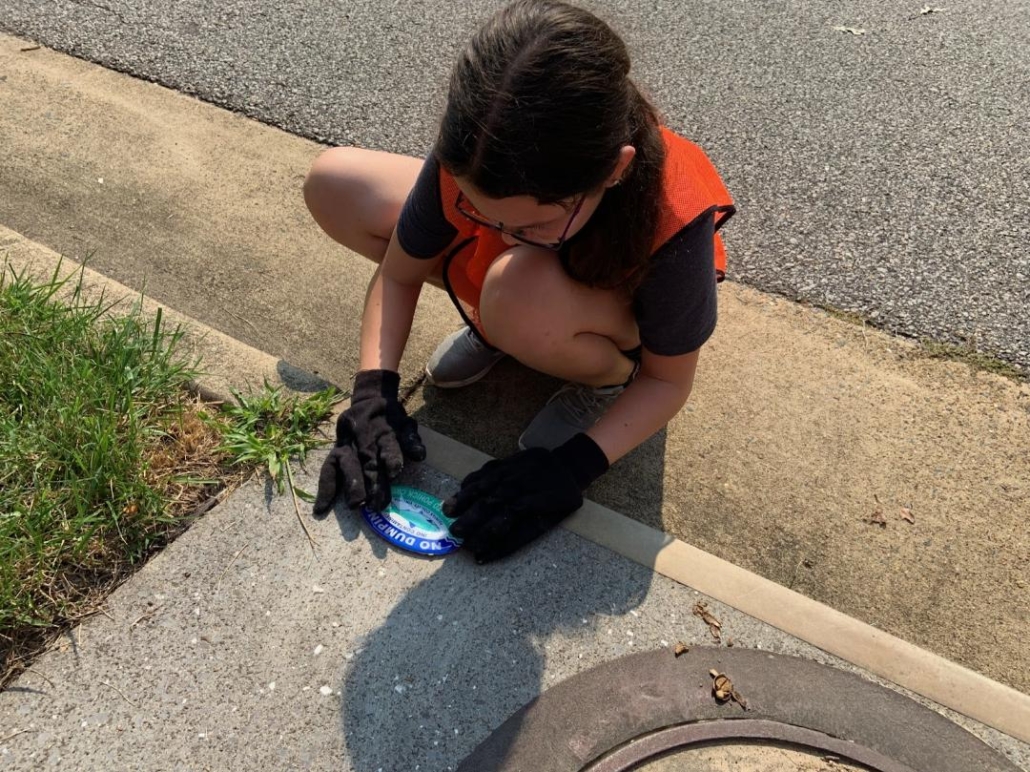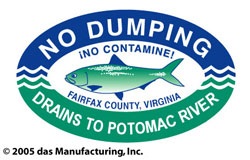Hidden Oaks Renovation Plans Include Consideration for Wood Frogs’ Mating Season
Article Photos courtesy of Fairfax County Park Authority
Author Suzanne Holland is Visitor Services Manager at Hidden Oaks Nature Center.
Preparations for construction take many forms. For Hidden Oaks Nature Center, the upheaval to the trees, park access and program scheduling are but a few of the aspects that site staff have long considered to get ready for the current renovation. One consideration was the construction’s impact on the pond that many frogs and salamanders use to mate in late winter and spring. Assisted by Eagle Scout Daniel Tootle, Hidden Oaks management planned a year in advance to minimize the habitat impact – a plan that has proven to be successful over the past two weeks.
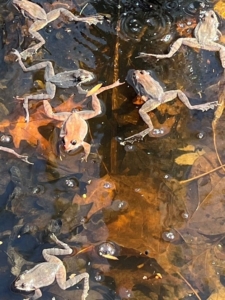
Wood frogs arrived at Hidden Oaks Nature Center’s temporary pools on Feb. 20, 2022.
The current construction required filling in the existing pond. Staff’s concern was that this would disrupt mating patterns for the frogs and later the American toads and yellow spotted salamanders. Every March, more than a hundred wood frogs gather in a small body of water just outside of Nature Playce – the site’s outdoor nature exploration area. The male wood frogs call in a laughing duck manner to woo the female wood frogs from their winter slumber. All meet up in the pond. Females lay thousands of eggs which hatch into tadpoles which metamorphose into froglets by mid-summer.
In June 2021, Dylan Tootle and 23 volunteers installed two temporary ponds on either side of the planned construction zone as part of Dylan’s Eagle Scout project. Using repurposed baby pools and prefabricated pond liners, Tootle’s “ponds” created above-ground and in-ground options for the park’s resident amphibians. The first wood frogs appeared on February 20 and soon had eggs floating in the above-ground pool in front of the building. A few days later, the second pond was brimming with frogs. While programs are currently suspended at Hidden Oaks Nature Center, the frogs and their cacophony of sound have fascinated the construction crews and contractors. Unfortunately, a dozen frogs opted to disobey the signs, hop into the construction zone and plop into the partially rainwater-filled new pond still being built. The team from Kadcon installed a ramp in the new pond to accommodate the wood frogs, who find it easier to jump in than climb out the comparatively steep sides. Though rains have created plenty of puddles over the last few weeks, the frogs seem to prefer our ponds over the rainwater puddles.
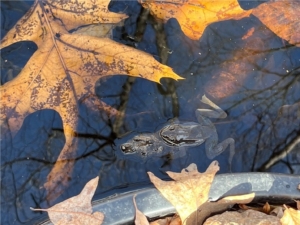
Frog mating calls joined the construction noise to create a cacophony of sound at Hidden Oaks.
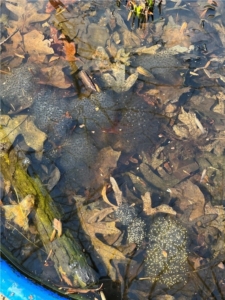
Wood frog egg masses soon appeared in the baby pool pond.
The new larger and permanent pond should be ready for its new inhabitants next week. Naturalists will then relocate the egg masses and newly hatched tadpoles into their new home. Sometimes the earliest laid eggs do not survive a hard freeze, but the adults can return to their shelter under the forest’s leaves and reenter “brumation”, a partial form of hibernation. They will rouse again when the weather warms up. The staff will track which pools the frogs and salamanders prefer and look forward to sharing the marvels of metamorphosis with visitors old and young.
Hidden Oaks Nature Center is located at 7701 Royce Street in Annandale. Please note the Nature Center is closed Feb. 14 to June 10, 2022, for renovations. No public restrooms will be available until April.
This entry was posted in Resource Management and tagged construction, Hidden Oaks Nature Center, nature, outdoors, Wood Frogs on .


